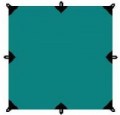Weight
The total weight of the tent is including the frame and other accessories.
This parameter depends primarily on the purpose (see above), and after that — on seasonality, capacity, and additional functions. For example, in trekking and expedition models, the weight usually does not exceed
5 – 7.5 kg, and the lightest of these products can weigh
2 – 3 kg or even
less, while being full-fledged tents for 2 people or even more. However, for a trekking tent, such a small weight with a capacity of more than 2 people usually means that this model is designed exclusively for the summer. For most camping tents, the weight starts at 6 kg, although among them there are also quite light products — by
4 – 5 kg,
3 – 4 kg, or even less (in such cases, light weight can also mean a purely summer specialization). And the most capacious and/or multifunctional models can have a weight of
10 – 15 kg,
15 – 20 kg and even
more; in this weight category, you can mainly find tents, camping tents for many people and fishing tents for carp fishing (see "Destination").
When choosing a tent according to this indicator, it is worth considering that it does not always make sense to chase the maximum weight reduction. Yes, the
...light tent is the most convenient to carry; on the other hand, weight reduction inevitably affects one or several other characteristics at once. So, most often, lighter models are either more expensive or smaller in size and less roomy and functional than their heavier counterparts. And sometimes weight reduction also negatively affects the security (including moisture resistance) and the overall reliability of the product. Therefore, it makes sense to specifically look for the lightest tent possible in cases where weight reduction is of key importance; a typical example is long trips, in which all the equipment has to be carried “on oneself” for a long time. And even in such cases, it is worth remembering other important characteristics. For example, for use in late autumn, when frosts are likely, it is better to choose a heavier tent with winter seasonality than a light model that is not designed for winter conditions.Reinforced materials (impregnation)
— PU (polyurethane). A polyurethane (PU) coating is applied to the inside of the outer tent. The protective layer of polyurethane increases the moisture resistance of the tent, at the same time, the strength of the awning fabric also increases. The main advantage of polyurethane is the ability to reliably protect seam joints. However, polyurethane protection is not the most effective, besides, the presence increases the weight of the tent. The use of polyurethane protection alone is more typical for entry-level (low-cost) class tents. In good quality tents, PU coating is complemented by other types of protection, often polyurethane is used together with silicone (Si).
— Si (silicone). The outer tent fabric is impregnated with silicone (Si). Silicone significantly increases the moisture resistance of the tent. The fabric impregnated with silicone acquires elasticity, its strength characteristics increase. This type of protection is considered the most technologically advanced and functional. The tent itself is impregnated with silicone (from the outside), and sometimes a PU coating is additionally made from the inside for better water resistance. The main disadvantage is the inability to protect seam joints. For this reason, the seams in silicone impregnated tents are glued separately.
Water resistance of tent
An indicator that reflects the ability of the tent awning to withstand moisture without getting wet. It is expressed in millimetres of water column — the height of the water column that the awning can withstand (the area of impact is out of the question, because the load per unit area under water depends only on the height of the water column and is not related to the area of \u200b\u200bits base). The significant figures indicated in the characteristics (for example, 4000 mm of water column, i.e. 4 metres) are due to the fact that raindrops can have a significant speed and, when they hit the tent, create a load at the point of impact comparable to the pressure on depth of several metres.
In general, the higher the waterproof rating, the better the awning will cope with the effects of rain and snow. Indicators up to 3000 mm w.c. Art. are considered sufficient for places where it rains rarely, awnings for 3000 – 7000 mm of water. Art. allow you not to be afraid of intense downpours, and in expeditionary (see "Destination") tents designed for extreme conditions, this figure can reach 10,000 mm of water. Art. and even more. However, more water-resistant fabrics, usually, have a significant weight, so in each individual case it makes sense to choose the option that is optimal in terms of durability and weight.
Reinforced corners
The corners of the tent are one of the "critical" places: in the unfolded state, they have almost the greatest stress, and the fabric in this place can be torn. To avoid this, many tents are equipped with
reinforced corners. In this case, strength can be increased due to multi-layer sewing, special fabric or additional firmware.

